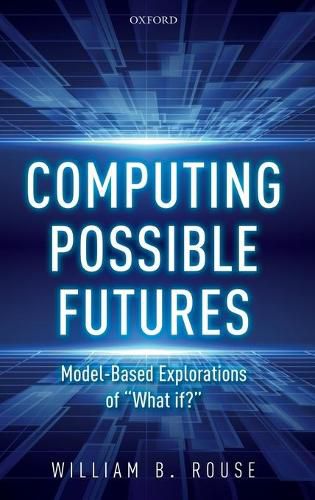Readings Newsletter
Become a Readings Member to make your shopping experience even easier.
Sign in or sign up for free!
You’re not far away from qualifying for FREE standard shipping within Australia
You’ve qualified for FREE standard shipping within Australia
The cart is loading…






Mathematical modelling and simulation is an increasingly powerful area of mathematics and computer science, which in recent years has been fuelled by the unprecedented access to larger than ever stores of data. These techniques have an increasing number of applications in the professional and political spheres, and people try to predict the results of certain courses of action as accurately as possible. Computing Possible Futures explores the use of models on everyday phenomena such as waiting in lines and driving a car, before expanding the model’s complexity to look at how large-scale computational models can help imagine big scale
what-if scenarios like the effect self-driving cars on the US economy. The successes and failures of complex real world problems are examined, and it is shown how few, if any, failures are due to model errors or computational difficulties. It is also shown how real life decision makers have addressed important problems and used their model-based understanding of possible futures to inform these decisions.Written in an entertaining and accessible way, Computing Possible Futures will help those concerned about the futurity of their decisions to understand what fundamentally needs to be done, why it needs to be done, and how to do it.
$9.00 standard shipping within Australia
FREE standard shipping within Australia for orders over $100.00
Express & International shipping calculated at checkout
Mathematical modelling and simulation is an increasingly powerful area of mathematics and computer science, which in recent years has been fuelled by the unprecedented access to larger than ever stores of data. These techniques have an increasing number of applications in the professional and political spheres, and people try to predict the results of certain courses of action as accurately as possible. Computing Possible Futures explores the use of models on everyday phenomena such as waiting in lines and driving a car, before expanding the model’s complexity to look at how large-scale computational models can help imagine big scale
what-if scenarios like the effect self-driving cars on the US economy. The successes and failures of complex real world problems are examined, and it is shown how few, if any, failures are due to model errors or computational difficulties. It is also shown how real life decision makers have addressed important problems and used their model-based understanding of possible futures to inform these decisions.Written in an entertaining and accessible way, Computing Possible Futures will help those concerned about the futurity of their decisions to understand what fundamentally needs to be done, why it needs to be done, and how to do it.